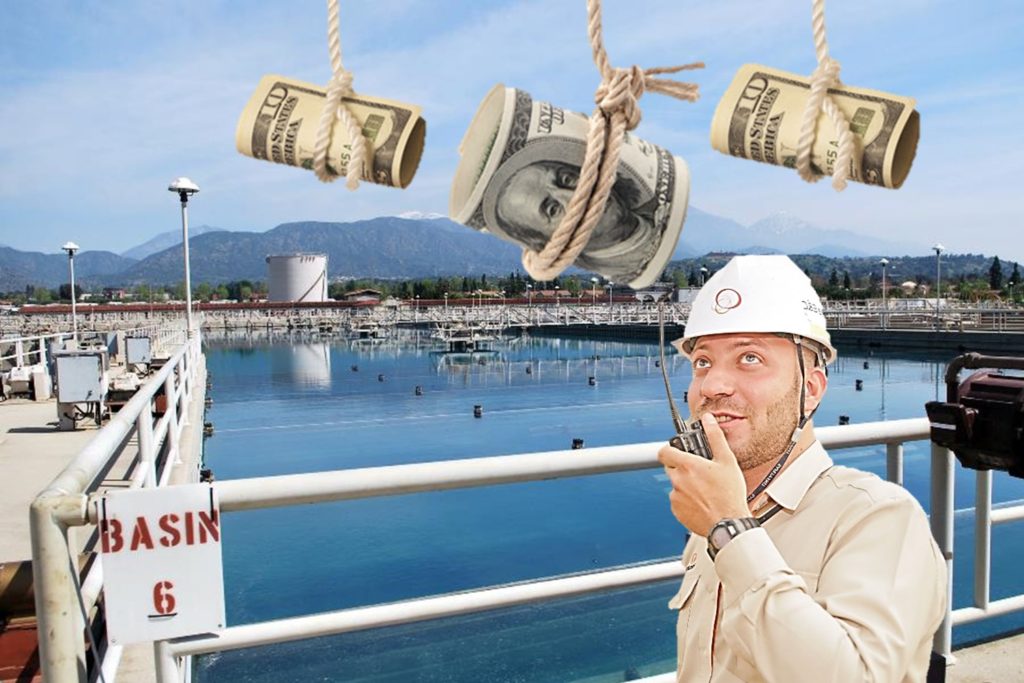A trillion-dollar federal infrastructure package and a chance to reform the water sector

– Warning: mixed metaphors ahead –
Observers of America’s water, sewer, and stormwater systems have known for years that the nation faces a trillion-plus-dollar bill for repairs, replacements, and upgrades. I’ve long been skeptical about the prospect of federal funding alleviating that burden in any significant way. With Congress ideologically divided and its chambers split across parties, the idea of a major infrastructure program coming out of Washington would seem unlikely on its face.
But rumblings over the past eighteen months have made me reconsider. Last spring the White House released an infrastructure plan that called for significant investments in water.*

Just before the 2018 mid-term elections, Congress passed the bipartisan America’s Water Infrastructure Act, which signaled federal priorities for the water sector but stopped short of sending tens of billions into the nation’s pipes and canals. Then last week President Trump met with House Speaker Pelosi and Senate Minority Leader Schumer and apparently agreed in principle on a $1-2 trillion federal infrastructure program.†
Little is known about the dimensions of the program, beyond the eye-popping figures. What might a huge federal infrastructure package mean for the water sector?
Back to an afterthought?
Transportation is the politician’s perennial infrastructure darling, as “roads and bridges” (Rosenbrigez) offer excellent credit-claiming opportunities for politicians who like to associate themselves with gleaming, highly visible projects. President Trump has made a career of putting his name on buildings, so we shouldn’t be surprised that he’d like to put his name on some Rosenbrigez, too. Although Pelosi and Schumer’s letter on infrastructure to the White House last week mentions “broadband, water, energy, schools, [and] housing,” transportation continues to grab the headlines: Time’s glibly declared that all $2 trillion was for Rosenbridgez.
Although water, sewer, and flood control systems are arguably more vital, much of that infrastructure is literally buried. Politicians aren’t clamoring to put their names on sewage treatment plants. Creating credit-claiming opportunities for water infrastructure is an ongoing challenge. If Washington is really going to pour hundreds of billions of dollars into infrastructure, water sector leaders will need to work hard to make sure their systems aren’t forsaken in favor of sexier transportation projects.
The promise & perils of fiscal federalism
Let’s assume for blogging’s sake that the water sector gets some major love (say, >$300 billion) in a trillion-dollar infrastructure bill. When contemplating such a massive federal capital infusion, it’s worth considering the last time Uncle Sam poured hundreds of billions into the water sector. The 1972 Clean Water Act and 1974 Safe Drinking Water Act included grants that provided as much as 90% matches for local investments in water and sewer infrastructure. The political genius behind the CWA and SDWA was that sweeping new environmental mandates came with considerable sweeteners in the form of federally-funded jobs in construction and environmental engineering. The federal funding made the new regulations politically palatable. From a policy perspective, the idea was for the federal funding to help create systems that local governments would operate, maintain, and upgrade in perpetuity.
Unfortunately, it hasn’t worked that way. One of the main reasons so much of America’s water infrastructure is in trouble is that there are strong structural disincentives for local leaders to invest adequately in water systems, as I’ve observed before. Maintaining water infrastructure doesn’t offer much of a credit-claiming opportunity, and local officials worry a great deal about being blamed for rate increases. Many of the organizations that operate water systems are ill-suited to the task; the institutions that govern and regulate water infrastructure are badly fragmented and often ineffective.
Attaching some strings
A federal water infrastructure funding package that fails to address the systemic factors that got us into this mess would be a wasted opportunity. Hundreds of billions of dollars might help shore up failing systems today, but would simply kick the problem down a generation: our children and grandchildren would face a similar infrastructure crisis in 2070, and justifiably curse their forebearers.
Rather than simply firing a money cannon at local water systems, federal leaders should use a massive funding package as leverage to reform the institutions that govern, regulate, and finance water infrastructure in America. In future posts I’ll explore some of the strings that Congress might consider attaching to their water infrastructure dollars.
*President Trump has since disowned his own plan. ????
†Still unclear is the small matter of how to raise a couple trillion dollars. Donald, Nancy, and Chuck are supposed to meet about that soon.
